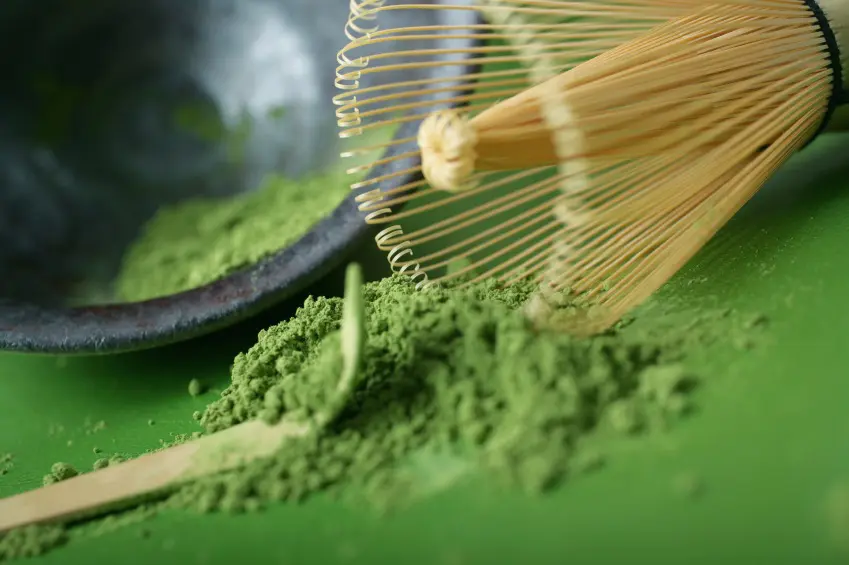Our fascination with matcha is heating up. America’s trendsetters are swapping their morning coffee for a cup of this jitter-free energy, used for centuries in Japan. Matcha contains about 30 mg of caffeine per cup, as well as L-theanine, an amino acid that promotes tranquility. The result is a pleasant, peaceful and alert effect. Plus you won’t get the afternoon energy crash.
The “healthy espresso”
Matcha is a powdered form of green tea. It has a fresh taste and a vivid green color. All of the health benefits of green tea can be found in matcha, which is enjoyed not only for its taste but also as a beverage to maintain health. The matcha leaf is rich in polyphenols, vitamins, minerals, fibers, chlorophyll and L-theanine.
Matcha contains about three times more beneficial polyphenols than regular green tea. Its antioxidant (ORAC) value scores well above that of goji berries, blueberries and dark chocolate.
There is some scientific evidence that the catechins found in matcha also promote weight loss, and may improve fat burn during exercise.
How matcha is made
With matcha, you are drinking the actual tea leaves. Matcha is made by slowly grinding the young, tender tea leaves by hand into a fine powder. A stone mill is used to avoid friction and heat which can cause the deterioration of its color and flavor.
Traditionally, a teaspoon of the powder is then placed into a bowl. Boiling water is stirred in, then the mixture is whisked with a bamboo brush for about one minute. Dr. Oz has recommended two cups of matcha tea daily to get its health benefits. If you don’t want to drink matcha as a tea, the powder can also be blended into smoothies and used in other recipes. You can also get the benefits of L-theanine in supplement form as Suntheanine.



Thank for sharing.
Looks really yummy
Thank for sharing.
Looks really yummy
Thank for recipe.